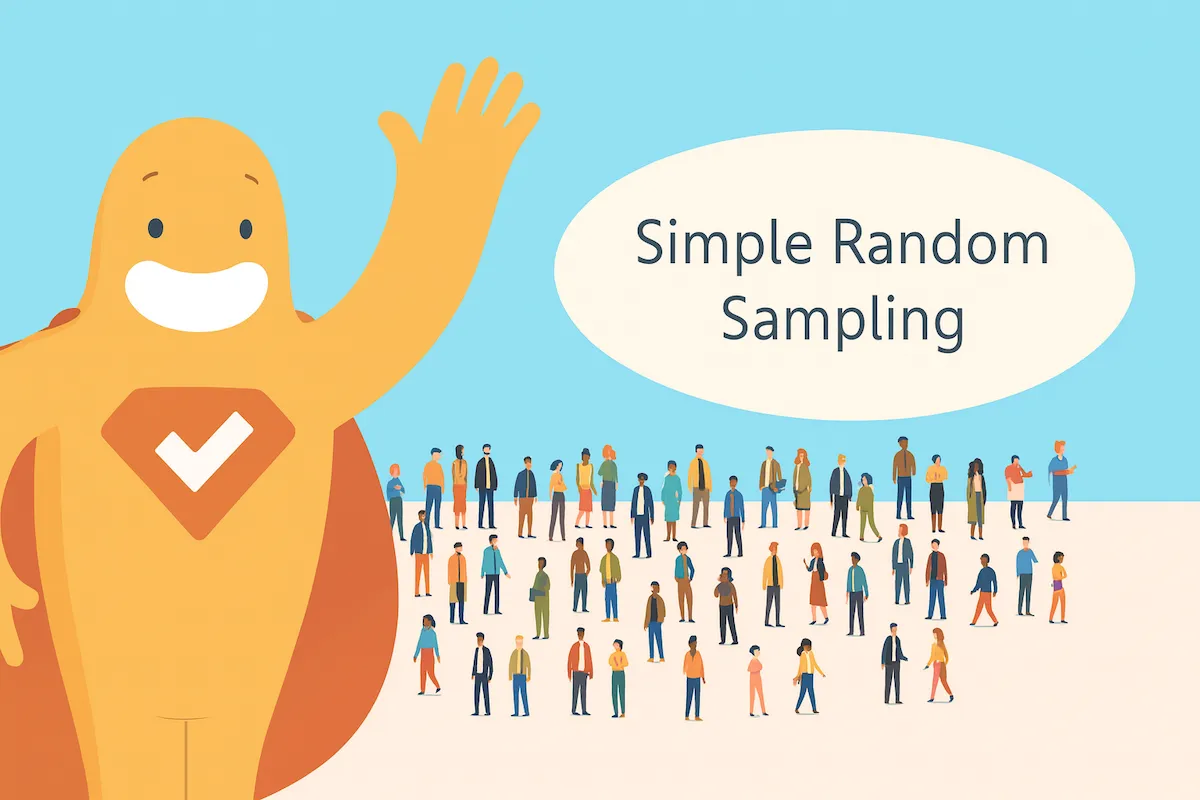DEI stands for Diversity, Equity, and Inclusion: diversity is who’s in the room, equity is fair access to opportunities, and inclusion is whether people feel valued as their full selves. Many companies still lag in DEI, so DEI surveys are used to understand employees’ real experiences, benchmark progress, and shape strategy. A good DEI survey uses inclusive demographic questions, is anonymous, and allows non-required questions with skip logic. Employers should clearly explain the survey’s purpose, possibly engage DEI consultants, compare results by region/department/manager, and always share findings plus action plans. Strong DEI surveys ask if people feel respected, see fair promotions, relate to leadership, can speak up safely, and believe harassment or discrimination is addressed. Most importantly, results must lead to visible change driven from the top.
Create your DEI survey, poll, or questionnaire now!
Today’s workforce is evolving, and now, diversity is more important than ever. Generation Z has begun making its mark in the workplace, and it is the most diverse generation in history. But embracing diversity also makes economic sense; a recent McKinsey report reveals that companies with greater diversity are likely to outperform their competitors by 25%! Diverse companies actively seek to hire from underrepresented communities to enhance workplace diversity, innovation, and inclusion.
So, how do companies make sure they’re cultivating a diverse workforce, offering equal opportunities for employees of diverse backgrounds to advance, and being inclusive to unique identities? One way is through a DEI survey. Having employees from diverse backgrounds brings valuable perspectives and experiences that strengthen organizational culture and performance.
Create your DEI survey, poll, or questionnaire now!
What is DEI? (Diversity, Equity, Inclusion)
DEI stands for Diversity, Equity, and Inclusion. These three ideals capture the culture of organizations that manage a diverse workforce and strive to provide the opportunity for everyone to succeed and participate regardless of background. Here’s the breakdown of each part.
- Diversity is the “checkbox” part of the equation. It simply means that the organization has a wide variety of diverse individuals working for it. This may include diversity based on gender, race, ethnicity, religion, nationality, education, marital status, sexual orientation, disability, socioeconomic status, and so on. Examples include cultural diversity, gender diversity, and disability status. Sexual identity is also a valued aspect of diversity that organizations should recognize and support.
- Equity shows that the organization offers opportunities for everyone and is fair in its treatment of each individual. Unlike equality, which insists everyone is treated the same, equity recognizes differences and the fact that advantages and barriers exist; it acknowledges that different people have different needs. Achieving true equity in the workplace requires attention to pay equity and a fair promotion and evaluation process, ensuring that all employees have equal access to advancement and compensation.
- Inclusion means that diverse people can be themselves at work and still feel valued and respected. For example, an LGBT individual is made to feel comfortable displaying a family photo; prayer times for certain religions are respected; ethnic dress for certain holidays is encouraged, etc.
Create your DEI survey, poll, or questionnaire now!
While many companies tout their diverse hiring practices, studies suggest that many business leaders are unable or unwilling to recognize that diversity challenges continue to exist in their organizations. A global, multi-year, cross-industry Diversity & Inclusion Benchmarking Survey commissioned by PwC shows that in North America, companies are slow and rank low when it comes to DEI.
- 79% of leadership engagement on DEI remains at the basic or emerging level
- Only 26% of organizations have DEI goals for leaders
- Only 17% have a C-suite-level diversity role in place
- Nearly 30% still have no DEI leader
Create your DEI survey, poll, or questionnaire now!
To understand how your company is doing when it comes to diversity, equity, and inclusion, the best thing to do is to conduct a DEI survey.
Creating a DEI Survey
To create an effective DEI survey, you must go beyond basic demographic data. It’s imperative to look at the lived employee experience. In other words, finding out whatʼs happening inside your organization and understanding how included employees feel and their experience of fairness in the workplace. A diversity survey uses workplace diversity survey questions to measure diversity, equity, and inclusion within the organization. The DEI survey can help organizations looking to:
- Benchmark the current status of diversity within the organization
- Develop a DEI program and inform the program’s direction
- Continue to monitor the quality of an existing DEI program
- Make changes to an existing program by measuring current opinions and engagement levels
- Use an equity survey to uncover workplace inequalities and promote fairness.
Create your DEI survey, poll, or questionnaire now!
To create a DEI survey that captures employee attention and gets engagement, there are a number of factors to consider. Using the right diversity and right DEI survey questions is essential to gather meaningful survey data and identify trends in the organization.
When monitoring and making changes to DEI programs, it is important to use diversity survey questions to measure inclusion and track progress.
1. Create Inclusive Demographic Questions
When creating a DEI survey, you don’t want to alienate employees right out of the gate by asking demographic questions that they may find insensitive. Including questions that capture the representation of diverse groups and employee diversity is essential for understanding and improving workplace inclusion. A few examples of what we mean:
Create your DEI survey, poll, or questionnaire now!
- When asking about race or ethnic groups, it’s not always black and white (pun intended). Many people identify with multiple races or ethnicities, so rather than make them select one category, allow them to “Select all that apply.” Be sure to consider underrepresented communities and diverse backgrounds when designing these demographic questions.
- When asking about sexual orientation (straight, gay, bisexual), do not include “gender identity.” Transgender and non-binary are not considered “orientations,” but rather how someone identifies, and should be in the “gender” category.
- Don’t assume a disabled person considers themselves disabled. Instead, carefully word your question similar to this: “Do you identify as a person with a disability or are you a person with accessibility needs?”
For more on demographic survey questions, check out our blog 15 Demographic Survey Questions and How To Ask Them.
2. Making the DEI Survey Anonymous
Because of the sensitive nature of DEI surveys, it’s important to make them anonymous to improve response rates. Of course, some employees may still be skeptical, thinking that their identity could be discovered due to their IP address, email address, etc. So, use a secure survey platform that uses encryption to protect respondent identities. Highlight this when you launch the survey to make everyone feel comfortable. You can also conduct confidential surveys, in which a third party receives the results (this enables follow-up with respondents, but not through your own company). Read more about anonymous and confidential surveys in our blog How To Get Anonymous Feedback Using Online Surveys.
Create your DEI survey, poll, or questionnaire now!
3. Make Questions Non-Required (and Use Skip Logic)
Some feedback is better than no feedback, right? Some employees may be willing to answer the bulk of your questions but may shy away from certain highly sensitive questions. So, don’t make every question a requirement; allow them to skip questions they’re not comfortable with. Use a survey platform with “skip logic” that will take a respondent to the next appropriate question once they’ve skipped a particular question.
4. Be Forthcoming With Intent
A DEI survey involves some very personal questions, so it’s important to be specific about your corporate DEI objectives. Be sure to share how employee input will help inform your DEI strategy (or change the existing one), and explain that survey results will directly guide your organization’s inclusion initiatives, equity efforts, and overall DEI efforts. Remind everyone that the survey is anonymous, and promise to share the results. “Transparency is key when creating and communicating surveys,” said Rachel Pierce-Burnside, a founding partner at Diversified, a Chicago-based consulting firm specializing in diversity, equity, and inclusion. HR teams should clearly present what the survey is for, why it is important, how the results will be used, and how the findings will be presented before asking employees to complete it. Communicating clearly will assist with engagement, interest, and trust.”
Create your DEI survey, poll, or questionnaire now!
5. Use Expert Resources
Before embarking on a DEI survey, it may behoove you to meet with a diversity consultant to be sure you’re going about things the right way. Consulting with business community members can also provide valuable perspectives that help identify unconscious biases and foster a more inclusive workplace, ultimately contributing to organizational success. “Diversity officers don’t necessarily come out of any diversity discipline; they often have backgrounds in HR or management,” says Christopher Metzler, director of the Equal Employment Opportunity and Diversity Studies program at Cornell University. “Consultants can essentially coach in-house diversity professionals through unique projects or unfamiliar situations.” Read more about diversity consultants on SHRM.
6. Compare Results by Region, Department, and Manager
If you’re a large company, some regions, departments, or managers may be doing a much better job with DEI than others. So, be sure to compare results by region, department, and manager. In doing so, you’ll gain an understanding of whether thereʼs a certain part of the organization where DEI sentiment is very low to unearth and understand troubled areas of the organization. Additionally, evaluate the diversity and inclusivity of the organization’s leadership team, and assess how effectively managers communicate DEI values to their teams. This can help determine whether the leadership team is fostering an environment of trust and inclusion, and if senior leaders are prioritizing these initiatives. If you uncover an area where DEI awareness is very high, you may look further into it to see what they are doing differently in order to bring their practices to the company at large.
Create your DEI survey, poll, or questionnaire now!
7. Share Your Findings
Too often, employees feel their responses go into a vacuum, never to be heard from again. To increase participation, it’s important to promise to share results and then follow through on that. You may have someone from Human Resources or a CEO present survey results during an all-company meeting, walking employees through the findings and adding context (if you’ve hired a diversity consultant, allowing them to present is another great option). Sharing these findings helps capture employee sentiment, reflects the perspectives of many employees, and reveals how employees perceive the organization’s DEI efforts. These presentations should include an overview of participation rates, survey scores, organizational strengths, opportunities for growth, key findings, and historical or benchmark comparisons. You should end the meeting by reviewing your detailed action plan, showing employees exactly what your business will be doing to address any issues raised by the survey.
8. Make Change
Change starts from the top down, so once your survey closes and you’ve shared the results, begin to actively make change. Implementing survey findings can improve workplace culture by fostering diversity, promoting diversity, and creating an inclusive environment and inclusive work environment where all employees feel valued and heard. A diversity consultant can help in this regard, or you may create an in-house diversity council that can identify challenges, find solutions, and present them to the C-suite.
Create your DEI survey, poll, or questionnaire now!
Measuring Progress in DEI Initiatives
Measuring progress in Diversity, Equity, and Inclusion (DEI) initiatives is essential for organizations committed to building a truly diverse and inclusive workplace. While launching DEI programs is a great first step, ongoing measurement ensures that your inclusion efforts are making a real impact and that your organization continues to move forward.
One of the most effective ways to measure progress is through regular inclusion surveys. By using thoughtfully crafted inclusion survey questions, organizations can gauge employee engagement, assess the effectiveness of diversity and inclusion efforts, and better understand how employees feel about the workplace culture. These surveys go beyond surface-level data, providing valuable insights into the lived experiences of employees from different backgrounds, including underrepresented groups and those from diverse cultural backgrounds.
Create your DEI survey, poll, or questionnaire now!
DEI Survey Questions To Ask: Right DEI Survey Questions
Curious what questions to ask on a DEI survey? We’ve put together a list of 10 questions to consider including. You’ll also want to add any others you feel are necessary based on your specific company and situation.
I feel my company:
- Values the differences of individuals and empowers them to make decisions
- Understands that diversity is critical to our future success
- Welcomes a diverse group of talent (e.g., ethnicity, gender identity, age, disability, sexual orientation, education, religion, etc).
- Provides opportunities for me to grow and advance in my career at my company, regardless of my background
- Takes steps to make the workplace and services inclusive, safe, and welcoming
- Allows me to bring my “whole self” to work, including all parts of my background
- Takes appropriate action in response to incidents of harassment or discrimination
- Enables me to voice my opinion, even when it differs from the group opinion
- Employs diverse leaders that I can relate to
- Offers promotions and raises fairly, regardless of background
Create your DEI survey, poll, or questionnaire now!
Consider adding questions such as:
- My company values diverse perspectives and encourages the expression of contrary opinions in meetings and decision-making.
- Employee resource groups (ERGs) are present and effective in supporting diversity, equity, inclusion, and belonging.
- The company’s diversity efforts have positively impacted employee retention.
- Unconscious biases are addressed and monitored in the workplace.
- Inclusion questions are regularly used to assess the inclusivity of our workplace environment.
- The company’s diversity efforts are effective in creating a diverse workplace.
- The hiring process is fair and supports the recruitment of candidates from underrepresented groups.
Create your DEI survey, poll, or questionnaire now!
You’ll also want to include an open-ended question asking how the company could improve diversity, equity, and inclusion.
Conclusion
Today, a diverse workforce not only makes sense on a social level but on an economic one. Unfortunately, not every organization has taken steps to improve DEI, which is detrimental. On the topic of diversity and inclusion, Harvard Business Review writes, “Leaders have long recognized that a diverse workforce of women, people of color, and LGBT individuals confers a competitive edge in terms of selling products or services to diverse end-users. Yet a stark gap persists between recognizing the leadership behaviors that unlock this capability and actually practicing them.”
To understand how your organization stacks up when it comes to DEI, it’s important to conduct DEI surveys. Employee surveys focused on diversity, equity, inclusion, and belonging (DEIB) provide valuable insights into employee experiences and perceptions, helping to foster a more inclusive and diverse workplace. You can use an inclusion survey template or develop your own survey tailored to your organization’s needs to gather meaningful feedback and drive positive change. “Surveys provide tangible data that can support what the needs, feelings, and ideas of team members truly are,” says Pierce-Burnside of Diversified. “Instead of relying on HR teams to create programs, policies, and initiatives from their own perspectives, executives can lean on survey results to present true evidence for where the organization should start and how.”
If you’re ready to create your DEI survey, get started now with SurveyLegend. Our surveys are beautifully rendered, secure, and mobile responsive. Plus, it’s free to sign up!
Do you value diversity in the workplace? Have you ever conducted a DEI survey? Were the results surprising? We’d love to hear from you in the comments!
Create your DEI survey, poll, or questionnaire now!
Frequently Asked Questions (FAQs)
What does DEI stand for?
Diversity, Equity, and Inclusion
What is meant by “diversity, equity, and inclusion”?
Diversity is how wide a variety an organization has employed, equity is how fairly each individual is treated, and inclusion is how comfortable people are coming to work as themselves without judgment.
What is a diversity consultant?
Diversity consultants are hired by organizations to coach in-house diversity professionals through unique projects or unfamiliar situations.
What is a DEI survey?
A diversity, equity, and inclusion survey aims to collect demographic data and analyze the lived employee experience (how included employees feel and their experience of fairness in the workplace).



